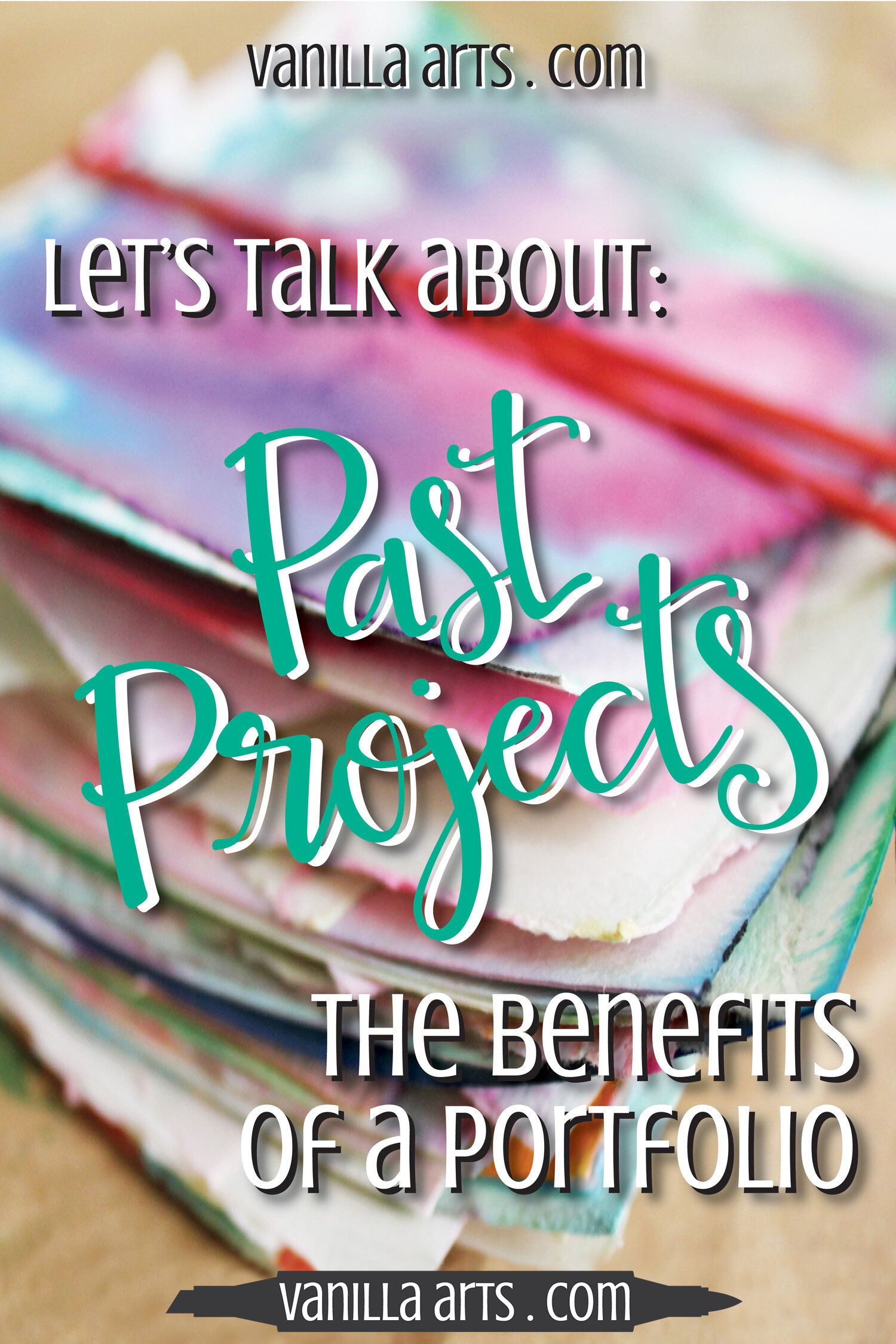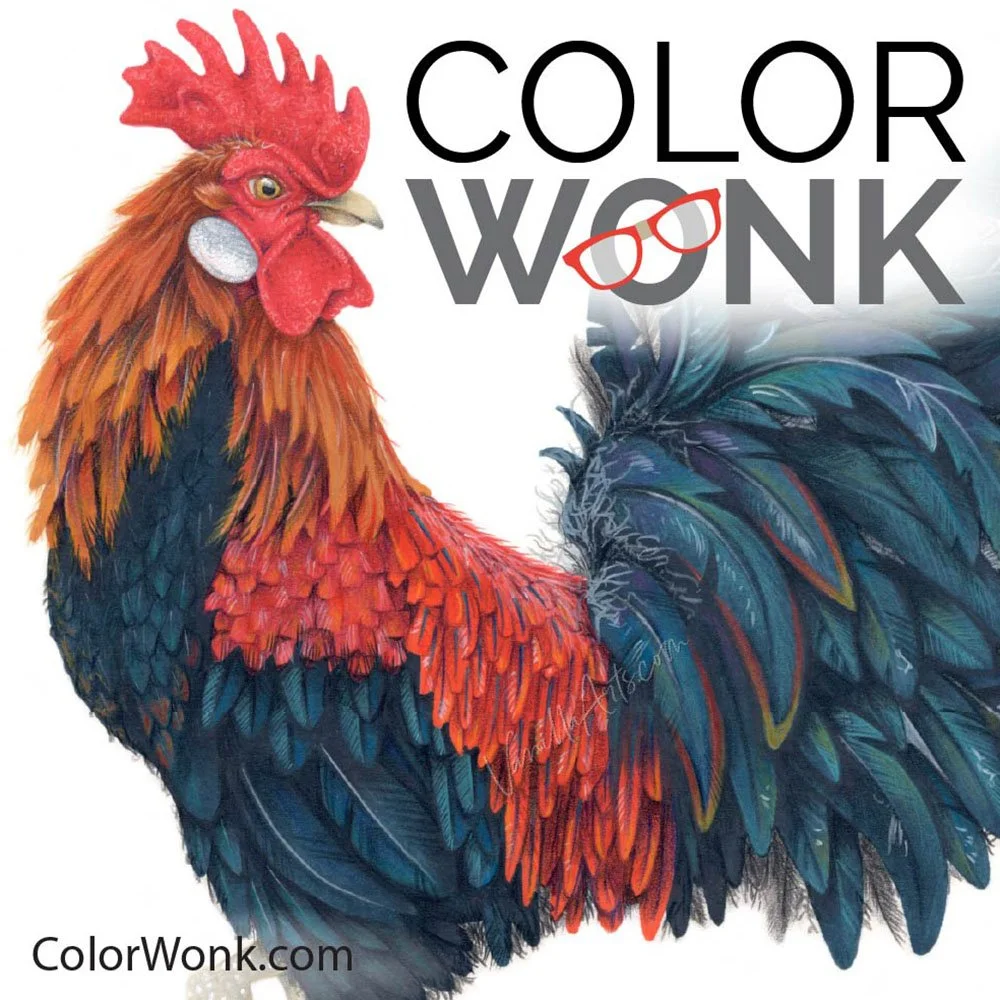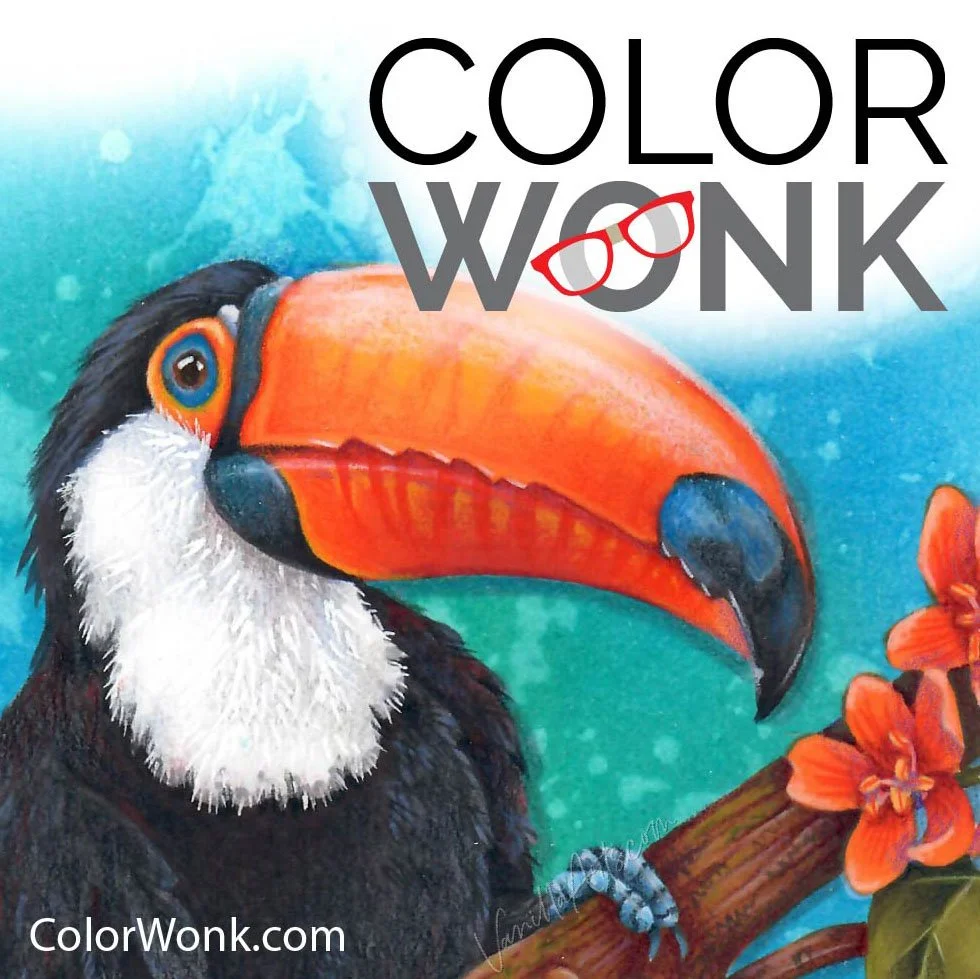Artist Portfolios: Not Just for Professionals!
My students often bring old projects to class
Because of the way my classes run, very few students actually finish a full image in class. Class time is essentially for learning a technique and for troubleshooting problems. The real work happens at home, so I'm always thrilled to see finished pieces.
I also love seeing what students have learned in other classes. It's great to hear about what other teachers are teaching, that helps to keep me on my toes!
But here's what I've noticed:
It's very rare for a student to show me a portfolio.
Nope. Most students bring one of two things:
Either they drag out a sketchbook with loose drawings shoved in-between pages of other drawings.
Or they bring the File Folder of Death.
Can we please talk about this?
Allow me to make a suggestion...
And I know about 50% of you are going to object.
Or at least feel a little squidgy about the concept.
You should start compiling a portfolio.
Today.
Yes, you.
Okay, let's hear the objections:
You're not an artist you're just someone who likes to color and this stuff is just class exercises and it's only mediocre work at best because someday you're doing to do these projects again and it'll all be perfect then and you'll think about putting THOSE perfect projects into a portfolio but why in the world would I tell you this stuff is worth putting into a portfolio???
I know. Portfolios are something artists do.
Real artists. The kind who wear berets and striped shirts and have officially been licensed as artists by the Worldwide Bureau of Artists Who Do Real Art (that's the WWBAWDRA for short).
Poppycock.
Portfolios are not an artist thing. They're an everyone thing.
But here's the twist-
I'm not telling you to start a portfolio to protect your artwork.
The protection thing is common sense; you don’t need me to tell you to protect your stash of coloring projects. Proper storage will keep them from getting torn or dog-eared.
And yes, it's especially important to protect Copic, colored pencil, or watercolor projects from sunlight. Sunlight does do nasty things to projects sitting out in the open. Yadda, yadda, yadda.
But that’s not the reason why I want you to start binding your projects together in portfolio format.
Here's my ulterior motive:
You can learn more from your own history than from any other source
And that includes teachers like me.
I can only teach you a technique.
It’s your job to discover how to use that technique to your own best advantage.
It's a self discovery process.
You need the ability to look back at projects you did last month, last year, two years ago, and even the stuff from wayyyyy back when you thought Donny Osmond was hot stuff.
Your cache of work is a record of what worked and what went horribly wrong. It's a valuable learning tool.
Flipping through the pages of a portfolio is the ideal way to make observations and comparisons. You forget most of what you learn in class, I'll bet 90% of what I tell students is completely wiped from their brain within 48 hours.
But you knew it long enough to use it in the project. Seeing that project helps you remember. Seeing a good project next to one that failed helps you diagnose and prevent carrying that bad technique on into future projects.
Portfolios aren't just a collection of past projects, they're the key to success on future projects.
What kind of portfolio system should you look for?
Easy is best.
Portfolio storage should be as simple as possible, something that takes only seconds to house your projects.
We're trying to eliminate the tendency that humans have to stack stuff. The last thing that we want is for you to stop shoving your projects into a sketchbook and start shoving them into a "to be filed someday" pile.
Back when I freelanced, I used to mat all my good stuff and slide it into an acetate sleeve, then the whole thing was bound into a screw-post style hard-bound booklet. I also had a digital portfolio where everything was professionally photographed and then stored on a website. And yeah, both of those portfolios styles are pretty much a beret-wearing-mustachioed artiste kind of thing.
But this is what I do with my class projects now and this is what I'm suggesting.
Plastic cover presentation books with clear PVC sleeves inside.
There are two styles, one with the sleeves permanently bound, the other is more of a ring binder system (usually 5+ rings). The ring style make it easier to re-order your projects but the perma-bound style is more compact and easier to store.
Pretty much all portfolio binders come with black sheets of paper in each sleeve, so it takes only a millisecond to pop your project into an empty slot.
If you're feeling fancy (and I do recommend getting fancy) you can center mount your project on a piece of cardstock before sliding it home. Projects mounted to the correct size cardstock are less likely to fall out later.
I use double sided tape but if you want something less permanent, consider using adhesive photo corners to hold your project down.
Crop your art in a manner that best shows it off. I prefer keeping things square with a guillotine trimmer but occasionally it's nice to fussy cut an image (especially if the finished project is close to the binder page size).
For smaller projects, you can mount two projects to a page.
The point is to keep it all clean and crisp looking. Don't mount projects on colored or patterned paper, you want the art to shine, not the background! Stick with gray or black for best results, and keep the entire book uniform, this isn't the time to show off your extensive collection of cardstock.
What about the exceptions?
Maybe some of you work large (or teeny-tiny). Good news, portfolio/presentation books come in many different sizes.
And for all you card makers, those who generously give away their best projects? I definitely recommend photographing or scanning your art before you work it permanently into the card and send it off to Timbuktu or Kalamazoo.
The same holds true for those who make 3D items or work on alternative surfaces like canvas or wood. Your camera, even a phone camera can be a life saver.
and psssttt... if you're photographing your own handi-work, please resist the urge to do the card-making blogger thing. Don't photograph the whole entire card from a pleasing angle in front of a nifty backdrop with four props alongside. That looks great on blogs but we're looking to record the art itself, not memorialize your still-life-shooting skills. Take that photo dead-on with no angle, in good light and with crisp detail.
Begin your portfolio today and keep using it
You'll thank me later.
It's a valuable learning resource and it looks great on your coffee table!




















